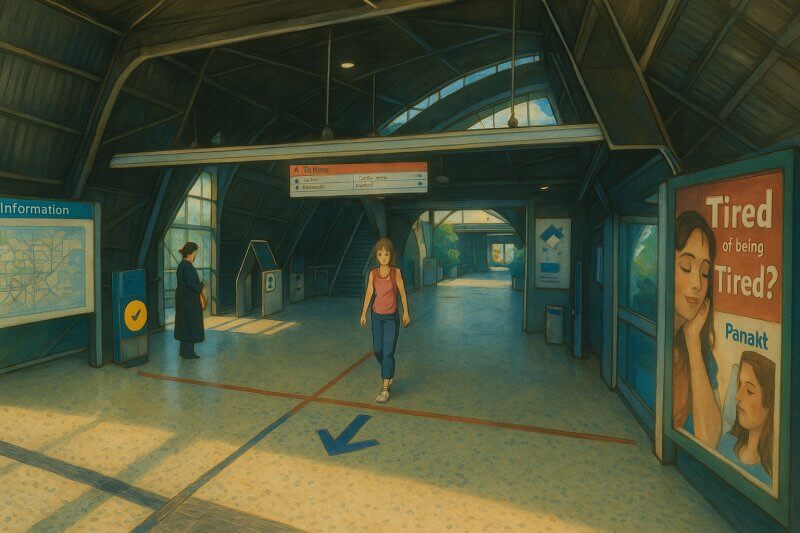
Docklands Light Railway (DLR)
Introduction to the Docklands Light Railway
The Docklands Light Railway, commonly abbreviated as DLR, is one of London’s most distinctive public transport systems. Introduced in the late 20th century, this automated light metro system was designed to support the regeneration of the Docklands, a former industrial area in East and South-East London.Fully integrated into Transport for London’s fare and ticketing systems, the DLR is particularly popular with commuters, residents, and tourists visiting sites such as Canary Wharf, Greenwich, and the ExCeL Exhibition Centre.
Geography and Coverage
The DLR serves a unique geography, focusing on the redeveloped Docklands area, which includes much of East London along the River Thames. Unlike London Underground lines, which often travel deep underground, the DLR operates mainly on elevated tracks or at ground level, providing scenic views along its route. Its routes stretch from the City of London (starting at Bank and Tower Gateway) all the way out to:- Beckton
- Woolwich Arsenal
- Lewisham
- Stratford International
Length and Usage
The Docklands Light Railway is approximately 24 miles (38 kilometres) long. Despite its compact size compared to other rail networks, the DLR carries an impressive volume of passengers.In a typical pre-pandemic year, the DLR saw more than 120 million journeys annually. While numbers dipped due to COVID-19, usage has been steadily rebounding as London returns to normal.
History and Development
The DLR was born out of necessity. During the 1980s, the London Docklands were undergoing significant regeneration. Once a thriving hub for shipping, the area had suffered economic decline and dereliction following the closure of the docks in the 1960s and 70s.Opened in 1987, the original DLR network was a modest system with only 11 stations and two-carriage trains. Its early success prompted multiple extensions over the years:
- 1991: Extension to Bank in the City of London
- 1999: Lewisham extension via a tunnel under the Thames
- 2005-2011: Extensions to King George V, Woolwich Arsenal, and Stratford International
The Origin of the Name
The name Docklands Light Railway reflects its purpose and the area it serves. “Docklands” references the former commercial docks in East London, while “Light Railway” denotes its lightweight infrastructure compared to heavy rail or traditional underground systems.The name was established in the early 1980s during the planning stages of the network and has remained unchanged since its public debut in 1987.
Number of Stations
As of today, the DLR has 45 stations across its network. These are grouped into several key branches that interconnect and cross through major residential and business districts.Neighbourhoods and Areas Served
The DLR weaves through a diverse range of neighbourhoods, connecting people to a mix of commercial centres, residential communities, and cultural hotspots. Notable areas served by the DLR include:- Canary Wharf – London’s modern financial district
- Greenwich – Known for its maritime history and the Royal Observatory
- Stratford – A key hub since the 2012 Olympics
- Woolwich – Home to a rapidly growing riverside community
- Lewisham – A major centre in South-East London
- Beckton – A primarily residential area with developing amenities

Painting of Docklands Light Railway station (View full-size image here)
Major Interchange Stations
Several DLR stations offer valuable connections to other transport networks, making the DLR a flexible component of the wider London public transport system.Key interchanges include:
- Bank: Connects with the Central, Northern, and Waterloo & City lines, as well as the Circle and District lines at Monument via passageway.
- Stratford: Interchange with London Overground, Central Line, Jubilee Line, and National Rail services.
- Canary Wharf: Connected to the Jubilee Line and within walking distance of the new Elizabeth Line (Crossrail) station.
- Shadwell: Connection to the London Overground’s East London Line.
- Greenwich and Lewisham: Connections to National Rail services into central and south London.
Fun Facts about the DLR
The Docklands Light Railway has several features that set it apart from other London transport lines:- Driverless trains: The DLR is fully automated. While there are onboard attendants (Passenger Service Agents) who oversee safety and can take manual control in emergencies, there are no traditional drivers.
- Front-row seats: Thanks to its driverless nature, passengers can sit right at the front or back of the train and enjoy an unimpeded view of the track — a favourite for children and tourists!
- Unique Thames crossings: The DLR includes both elevated and sub-river tunnels. One of the most interesting is the tunnel connecting King George V to Woolwich Arsenal — a feat of engineering completed in 2009.
- Filming location: The futuristic look of parts of the DLR, especially around Canary Wharf and the Docklands, has made it a popular filming location for sci-fi and action films.
Conclusion
The Docklands Light Railway is more than just a transit line — it’s a symbol of London’s regeneration and forward-thinking infrastructure. With its sleek, driverless trains, excellent connectivity, and scenic routes through historic docklands and modern skyscrapers, the DLR is both practical for commuters and fascinating for visitors.Whether you're heading to the Royal Docks, exploring Greenwich, or simply enjoying a scenic ride, the DLR offers a unique window into a modern and revitalised part of London.